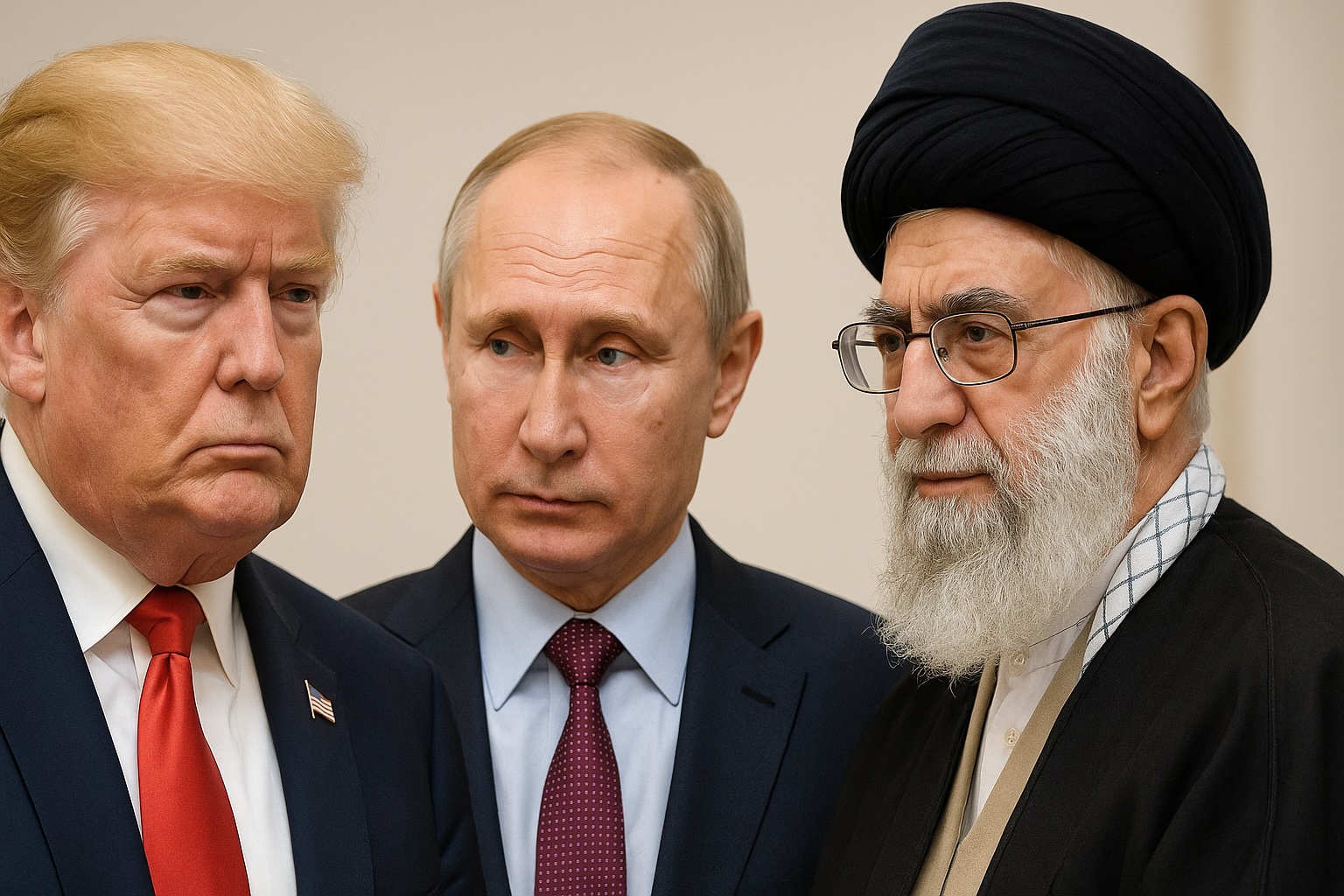After Bombs and Missiles, Iran Runs to Russia and China—What Are They Planning?

After the Fire: Iran’s Quiet Diplomacy and the Global Dealings That Helped Halt the War
Tehran — In the wake of one of the most dangerous flare-ups in recent Middle Eastern history, Iran’s government has launched a swift, high-stakes diplomatic campaign aimed at salvaging its strategic position. As missiles fell on Tehran and Israeli jets targeted nuclear infrastructure, Iran’s response extended beyond military retaliation. It moved across borders and into backrooms, where political leverage, historical alliances, and geopolitical calculus began working toward what may now be a fragile ceasefire.
The cessation of hostilities between Iran and Israel, tentatively brokered with U.S. involvement and Qatari mediation, did not emerge from empty space. It was built—quietly—through urgent visits, behind-the-scenes communication, and strategic appeals to global power centers. The most revealing of these efforts unfolded in Moscow.
On June 22, Iranian Foreign Minister Seyed Abbas Araghchi arrived in the Russian capital with a sealed letter from Supreme Leader Ayatollah Ali Khamenei addressed to President Vladimir Putin. The message was clear: Iran needed more than rhetorical solidarity. Tehran sought tangible backing—diplomatic strength, moral leverage, and perhaps even defense assurances. Moscow responded by denouncing Israeli and American actions, offering mediation, and reiterating its alliance with Tehran. But it stopped short of military commitment, revealing the careful balancing act Russia must perform as a friend to Iran and a global power with its own strategic constraints.
Meanwhile, Beijing’s role, though more passive, proved symbolically powerful. The Chinese government issued public condemnation of the Israeli strikes and repeated its long-standing support for peaceful negotiation. This echoed the broader contours of the 25-year strategic partnership between China and Iran—a relationship based not just on oil and infrastructure, but on geopolitical alignment. While Beijing remains cautious, its positioning strengthened Tehran’s sense of not being alone.
India, though more reserved, was not absent from the conversation. Long engaged with Iran through the Chabahar port project and bilateral trade, New Delhi maintained a calibrated neutrality. Its interest in regional stability—especially in light of ongoing tensions with Pakistan and its energy reliance on Gulf routes—meant that India was watching the situation closely, ready to leverage its ties if diplomacy demanded it.
The European Union also stirred into motion. Foreign ministers gathered to discuss diplomatic interventions around the Strait of Hormuz, a waterway essential to global oil supply and trade. Although Tehran has historically been skeptical of Western-led mediation, Europe’s concern for humanitarian fallout and oil market volatility added pressure on all sides to step back from the brink.
All of these moves came in the aftermath of Iran’s missile strike on the U.S. Al-Udeid Air Base in Qatar—an act of retaliation for American strikes on Iranian nuclear sites. Though the missiles were intercepted and no casualties were reported, the gesture was more than symbolic. It communicated Tehran’s resolve while deliberately avoiding escalation. President Donald Trump himself acknowledged Iran’s advance warning and called the attack “very weak”—a choice of words that underscored both disdain and diplomatic opportunity.
Trump’s announcement of a “complete and total ceasefire” followed hours later. While skepticism remains over whether Iran and Israel will fully adhere to the truce, Tehran’s subtle diplomatic choreography—built on decades-old alliances and swift regional engagement—appears to have shaped the outcome as much as any airstrike or drone.
It is now unclear where Tehran will turn next. With nuclear facilities damaged and domestic unrest simmering beneath the surface, Iran’s leadership faces a pivotal choice. Will it lean further into the arms of Russia and China, reinforcing an anti-Western bloc? Or will it re-engage with broader international forums, where concessions may be demanded, but reintegration is possible?
What is clear is that even amid the smoke of battle, Iran’s diplomats were already laying groundwork for what came after. Whether the ceasefire holds may depend as much on Tehran’s next steps as it does on the promises traded in Washington, Jerusalem, or Doha. For now, the region exhales—not in peace, but in uneasy pause.




![From Kathmandu to the World: How Excel Students Are Winning Big [Admission Open]](https://nepalaaja.com/img/70194/medium/excel-college-info-eng-nep-2342.jpg)
